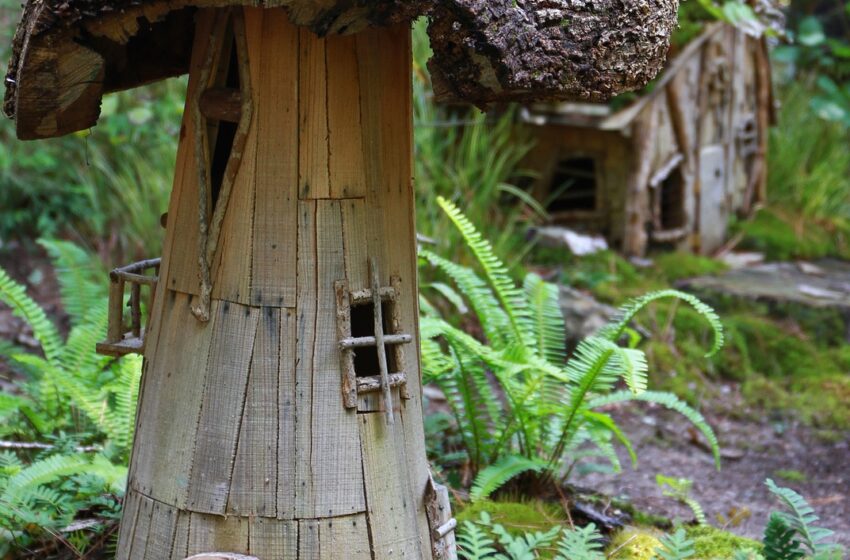Every house has a story to tell

Do you know that some houses are old, and some are new? When you pass on the house to the next generation, you must pass on the story to the next generation. In this way, you can find heritage in a simple place. But if generations are passing on the homes, then there should be a way to find the story. Each house has a story. So, knowing the year a house was built can tell this story through all the owners it has had. Also, one may need to know the year a house was built to obtain a tax credit. In this article, you can find out how to do it. So, the real effort is to find the history of your house.
Every house has a story: How to find one?
Family is like a unit and plays a crucial role in building our society. But making a happy family isn’t magic because all families are so glad. Not all families need to create exciting stories, but all the stories are happy ones. In my opinion, every house has an absorbing power. Thus, if the family is bigger, the story will bring variety. You can find basic house-related details on property websites like Zillow or Redfin. But if you want to find detailed information, then use the following ways:
Property listings:
It’s a great place to start searching for the house story. If basic websites can’t help and you are in contact with a house agent, you still have a chance. Yes, there is an option of Multiple listing service databases. But only real estate agents can use it, and it offers endless ways to discover the house’s history. According to a property agent:
“We search out an address and find a ton of house history. The information includes pictures, zoning, maps, and ownership boundaries.”
So, if nothing is working out, you can get the help of real estate agents and property listings to get in-depth information.
Historical maps of the city:
If you run a little search, you will know there is an option to find historical maps. But there isn’t any guarantee that it includes the photos of your home, but it’s worth giving a try. You can use different websites to find the historical maps in this situation. Here are a few major and expensive cities in US that are covered by the historical maps:
| New York city | Philadelphia |
| San Francisco | And Los Angeles |
If the house isn’t ancient, you can look up the Google Street view history. You only need to click on the photos, access the street view, and look for the timeline. In this way, you can search home addresses if Google images pop up.
Check public records:
If you are interested in previous owners and purchase history, go to the country’s tax assessors’ office. You can also approach the country recorder or city hall to get information. But the source of information depends on the information that you are seeking. For instance, it depends if you want to discover property deeds, previous owners, lawsuits, and personal history. Besides, you can check the owner’s bankruptcy or marital status. Moreover, you can check the local library and the city department of safety & building to know the name of the home’s contractors or architects.
Neighbors:
If you don’t like technical ways, you have a simple way like neighbors to check the home’s history. It’s a simple method, but you will have to find the neighbors that have lived near your area. However, the neighbors can give you clues about many things you can’t find in public records. According to the Chantay:
“Many neighbors know everything about the area, house, and previous owners.”
It’s a great way you can find unique and hidden information. You will be surprised after uncovering the data from a person living next door.
Go to the local cadaster office.
The cadaster used to designate a computerized system that records land ownership status in a territory. It also designates the organization responsible for maintaining this set of information systems. Therefore, it allows knowing the extent and nature of a property. The cadastral documents consist of plans, and cadastral matrices that contain information about the construction of a field. It also contains information relating to the work that may have been carried out on this site.
Thus, the land contribution distribution is facilitated and more equitable. Also, the cadaster exists in several types. Thus, the legal cadaster provides a beginning of the proof of the acquired rights on a property. There is also the fiscal cadaster, which provides information on property tax.
Also, in some countries, we have an agricultural cadaster, a decision-making tool for agricultural infrastructure. There is also the solar cadaster for assessing the solar potential of buildings in relation to a given territory. Also, note the green cadaster to monitor the ecological network.
Local land registry
To find out the year, your house was built, go to the local land registry office. The latter must be located in the town where the house is located. Also, make sure you know the latter’s exact situation: address, house number, and name of the owner.
Once you have the document, first consult its alphabetical table. You will find next to the name of the owner the folio number of the cadastral matrix. It is subdivided into 4 important and useful columns to reconstruct the history of a house. It is:
- The Year column of the acquired plots
- The Year column of the sold plots
- The column of folio numbers of previous owners
- The folio number column of the following owners.
Thus, the items acquired are taken from the penultimate column while those sold are moved to the last column. So, by continuing the excavations, you go back to the first owner and to the date of acquisition of the land by this one. Ultimately, you find that your house has a story.

Consult the websites
Each town hall has a municipal site. The latter often offers the possibility of consulting the archives that list information relating to the municipality’s properties. Thus, you find the names of the different people who have owned a given house. Likewise, you have the dates of the acquisition and sale of the latter.
Many sites constitute departmental archives. It is then sufficient to have the deed of ownership of the current owner. Then you enter the requested information, and in a few clicks, you can find out when your house was built.
Note: Apart from this, you can take the help of other sources like “The National Archives & Records Administration (NARA).” Building history and old house web are other terrific options to check your house’s story.